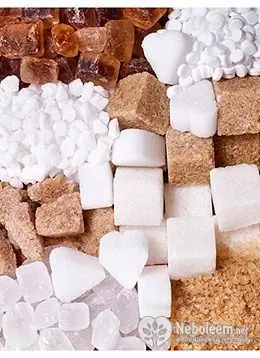- Author Rachel Wainwright [email protected].
- Public 2023-12-15 07:39.
- Last modified 2025-11-02 20:14.
Sugar syrup

Sugar syrup is a concentrated solution of one or more types of sugar that has been diluted with water or fruit juice. This syrup contains 40 to 85% sugar.
Origin and features of cooking
Sugar syrup was first used in Eastern countries. It was actively used for confectionery purposes, was used to process food, and also fruit juices, purees, compotes and various types of jam were cooked in it.
In Arab countries, unflavored sugar syrup has become the main ingredient in many types of sweets, including toffee, roasted nuts, caramel, candy and fondant. Later, additional ingredients were added to the syrup - nuts, butter and milk.
In European cuisine, sugar syrup has begun to be used in the preparation of frostings, biscuits and for preserving jams.
Concentration of sugar syrup
Its confectionery application depends on the concentration of the sugar syrup. When preparing syrup, various methods are used, and the concentration is measured with a sugar thermometer, which allows you to determine the state of sugar at different stages of cooking. There are over 12 stages of sugar syrup.
At home, without a special thermometer, you can independently determine the concentration of sugar syrup using a dessert spoon. When cooking, you need to take a few drops of syrup with a spoon and determine its concentration.
There are several types of sugar syrup concentration:
- the thread is thin and thick, in which the sugar is pulled by a thread of various thicknesses;
- soft and hard ball (when added to sugar syrup, a ball of different density rolls down);
- caramel (a lump of sugar breaks down in cold water and does not stick to your teeth);
- Burnt sugar contains no water, is dark brown in color, and is used mixed for confectionery or medicinally in medicines to treat coughs.
Uses and benefits of sugar syrup
Sugar syrup is the main ingredient in a variety of pastries and is also added to various drinks such as tea, cocktail, coffee and cocoa. This syrup can be used as a preservative for preserves, jellies, marmalades and jams. In confectionery production, syrup should contain up to 60% sugar, it can be added to canned compotes and jams.
Sugar syrup with added fruit can be eaten as well as jellies, mousses, fruit salads and yogurts.

In medicine, this syrup is used as a sweetener for medicines.
In many European countries, rye bread is made on the basis of syrup. When this ingredient is added, the bread becomes a tasty and healthy product, it acquires a characteristic color and aroma. Sugar syrup in bread is a natural nutrient for yeast, improves dough fermentation and bread structure.
The sugar in the syrup is a source of energy, since it contains glucose that is useful for the body, and also stimulates the production of insulin by the pancreas. As a result, serotonin is released, which improves the well-being and general condition of the body.
Contraindications
Contraindications to the use of sugar syrup are individual intolerance and predisposition to allergic reactions, diabetes mellitus and high blood glucose.
It is not recommended to include sugar syrup in the dietary menu, as it is a high-calorie product.
This syrup, if consumed constantly, due to the large amount of sugar, can worsen the condition of the teeth, damage the enamel and cause caries.
Overweight people with metabolic disorders should limit the consumption of this syrup.
Found a mistake in the text? Select it and press Ctrl + Enter.






